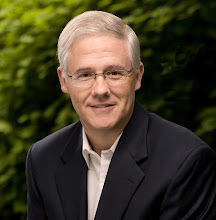
Every genre has unique structural elements that make it a challenge to write well. But the most difficult genre of all may be the love story, especially the romantic comedy. The love story turns on two contradictory requirements. On one hand, a love story should take only ten minutes. Two people are attracted to one another, and the rest is negotiation. On the other hand, the story must last a long time for the love to be believable to the audience. The audience can’t just see the two people fall in love. They have to feel it, and that takes a lot of screen time.
These two contradictory elements account for many of the 12 unique story beats that make up the genre. For example, when the two leads first meet, they always fight. Of course, this is completely unrealistic; next time you’re interested in someone, go start a fight with them and see what happens. But starting a love story with a fight makes a lot of structural sense. Remember, you have to create more than ten minutes of story.
If we look at Nick & Norah’s Infinite Playlist, by Lorene Scafaria from a novel by Rachel Cohen and David Levithan, we can see writers struggling with the special challenges of the love story. The film relies on textural details, especially music, to make it feel original and fresh. But because the writers never cracked the structural essentials of a good romance, the audience gets little story and no feeling of love.
The key structural mistake in this script has to do with Desire, one of the 7 major structure steps in any story and especially crucial in a romance. The main desire line in a romance, and the spine of the story, is the desire the two characters have for each other. This is why the classic Hollywood love story tracks the man’s quest for the woman. She opposes that desire for most of the story, and they finally get together at the end.
Notice that approach establishes a desire line and conflict for 90 plus minutes, and solves the first big difficulty of the love genre. But notice also that this is essentially the structure of an action story. And while this structure gives the audience plenty of time to feel the love developing between the two characters, most of what the characters are feeling toward each other is not love, but conflict.
The writers of Nick & Norah’s Infinite Playlist wanted to use a different love story structure, one not based on the guy chasing the resisting girl. That’s a great idea in theory. But in practice, they chose to change the primary desire line from a passion between the two characters to an outside desire the characters share, which is to find where an underground band is playing. True, this gave the writers a line that extends for 90 plus minutes, with plenty of time for the two leads to get to know one another and fall in love.
But at what cost? The story is extremely episodic as the leads go from one location to another in search of a band the audience doesn’t care about. Which means that while there are multiple events, there is no plot. And because the driving desire is not between the two leads, this remains a friend story, not a love story.
The screenwriter, apparently realizing the lack of urgency in the main desire line, added a secondary desire where the leads search for a drunken friend who is lost in the big city. But this just adds an unrelated story line (not a true sub-plot). And watching a young woman stumble around drunk for 90 minutes is anything but funny.
We can certainly learn some lessons here. If you want to write a love story that doesn’t rely on the old man-chases-woman schematic, by all means do it. It will set you apart and give you the opportunity to write what I call, in the Love Story Class, a “true love story.” But don’t make the mistake of substituting an outside desire line for the desire that must be the spine of any good and moving love story, which is the craving that each has for the other. Never lose sight of what is really at stake in a love story, and that’s love itself.
If you would like to learn all of the beats of a great love story, along with how to write each of the many sub-genres of love, including romantic comedy, take a look at the Love Story Class and Love Story Software. Very few writers have mastered this tricky form, but it can be done. And the payoff is huge.
